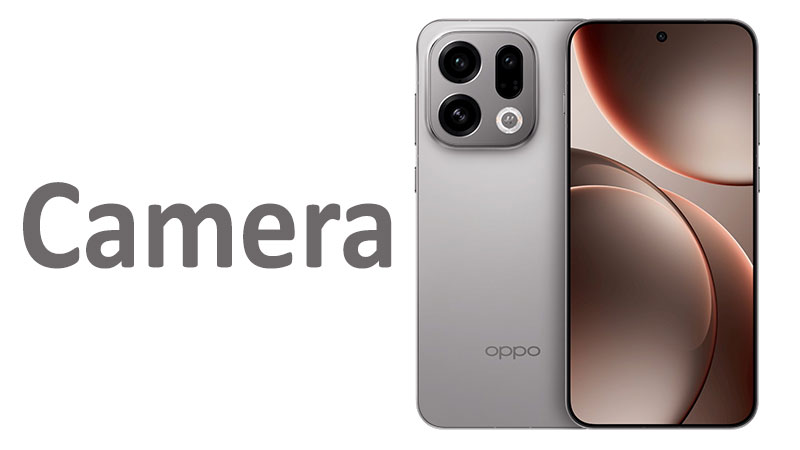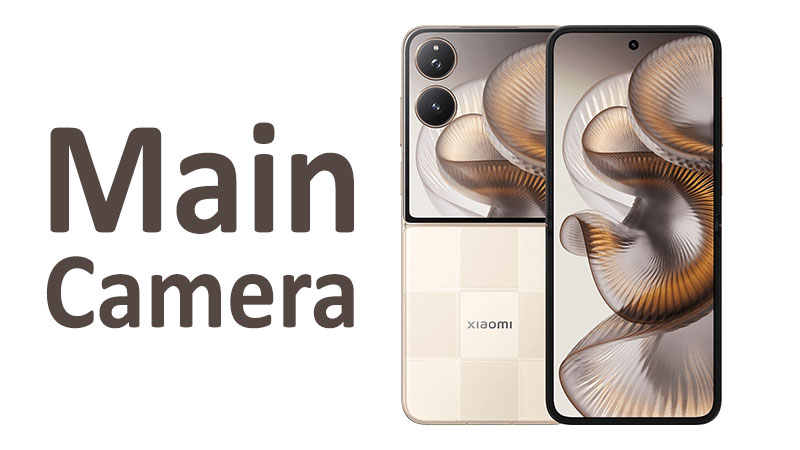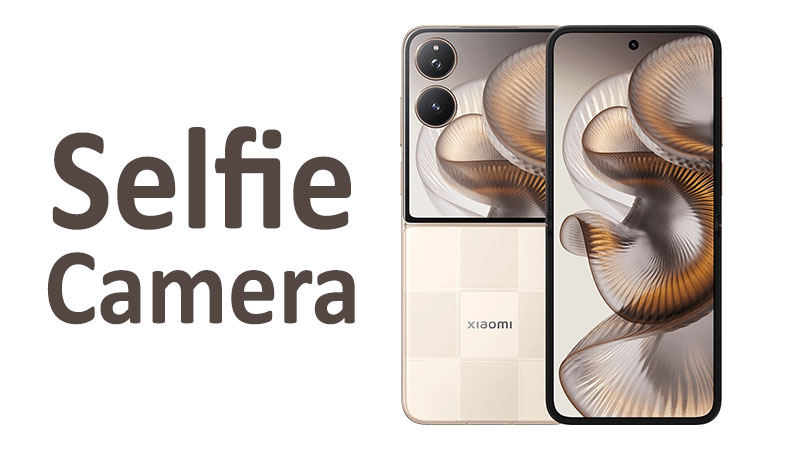The Oppo Find X9 Camera system represents a significant leap forward in mobile imaging. This thorough review analyzes the precise hardware specifications and real-world performance. We examine how this flagship device positions itself against its competitors. The goal is to provide a detailed, unbiased assessment of the entire imaging array. This will help readers make an informed purchasing decision.
Introducing the Find X9 Imaging System
Oppo’s latest flagship integrates custom-engineered hardware with advanced computational photography. The Find X9 focuses on consistent image quality across all focal lengths. It achieves this with a symmetrical triple 50-megapixel sensor setup on the rear. This uniformity is a deliberate choice. It provides a seamless transition between the main, telephoto, and ultra-wide lenses. The system is co-engineered with Hasselblad. This collaboration ensures precise color science and sophisticated professional controls.
The Find X9 is not just chasing high megapixel numbers. It prioritizes the quality of the sensor and optics. This dedication results in clarity, dynamic range, and color accuracy. It is a powerful tool for serious photographers. This review will explore the capabilities of each lens. We also examine the advanced video features.
Main Camera: The 50MP Wide Sensor
The primary camera acts as the backbone of the entire Find X9 system. It is responsible for the majority of everyday photography. Oppo has equipped it with a high-end 50-megapixel sensor. This is paired with impressive optics for superior light capture.
Main Camera Specifications Breakdown
The main lens features a wide f/1.6 aperture. This aperture allows a substantial amount of light to reach the sensor. The lens uses a 23mm equivalent focal length. This provides a versatile, natural perspective. The sensor measures 1/1.4 inches. Its pixels are 1.12 micrometers (µm) in size. This combination of size and aperture makes it excellent for low-light scenarios.
The primary camera includes several key technologies. It features multi-directional Phase Detection Autofocus, or PDAF. This ensures extremely fast and accurate focus locking. Optical Image Stabilization, or OIS, is also crucial. It physically stabilizes the lens against hand movement. This results in sharper photos and smoother videos.
Daylight Performance
In well-lit outdoor conditions, the main camera excels. It captures images with exceptional detail and clarity. The 50MP resolution, typically outputting binned 12.5MP images, provides excellent sharpness. Colors benefit from the Hasselblad calibration. This partnership ensures tones are natural yet rich. The high dynamic range captures details in both bright skies and deep shadows. Users experience minimal noise and faithful texture reproduction.
Low-Light Capabilities
Low-light performance is a major strength of the Find X9. The large 1/1.4-inch sensor gathers ample light passively. The wide f/1.6 aperture further enhances light capture. This reduces the need for aggressive computational processing. OIS is vital in these conditions. It allows for longer exposures without motion blur. Consequently, night photos are bright, clean, and highly detailed. The camera manages tricky light sources well. It effectively controls lens flare and blooming.
Specialized Comparison: PDAF vs. Standard AF
The multi-directional PDAF is a key differentiator. Older or lower-end phones often use standard PDAF. This only samples movement along one axis. The Find X9’s multi-directional system samples movement across the entire sensor. Therefore, focus acquisition is faster and more precise. This is particularly noticeable when shooting moving subjects or in low light. It ensures fewer missed shots in dynamic situations.
Telephoto Camera: The 3x Periscope Zoom
Oppo includes a dedicated periscope telephoto lens on the Find X9. This camera is designed to bring distant subjects closer without sacrificing quality. It completes the versatile focal length system.
Telephoto Specifications and Optics
The telephoto lens uses a 50-megapixel sensor. It offers a 3x optical zoom. This corresponds to a 73mm equivalent focal length. The periscope design allows for this optical reach. It does so while maintaining a slim phone profile. The aperture is f/2.6. The sensor size is 1/1.95 inches. Its individual pixels measure 0.61µm. Despite the smaller physical pixel size, the 50MP resolution and OIS ensure high quality. The telephoto also includes multi-directional PDAF and OIS.
3x Optical Zoom Performance
The 3x optical zoom delivers truly lossless magnification. Images captured at 3x maintain the same color and detail fidelity as the main camera. This is where the uniform 50MP sensor setup pays off. There is consistent image quality across the wide and telephoto ranges. This is perfect for portraits or isolating details in a landscape. The 73mm focal length is classic for portraiture. It provides pleasant subject compression.
Extended Digital Zoom
The Find X9 excels in its digital zoom capabilities. Going beyond the 3x optical limit, the 50MP sensor provides massive data reserves. This allows the computational algorithms to perform effective cropping. They enhance details intelligently up to high magnification levels. Although quality degrades slightly digitally, the results remain highly usable. The integrated OIS helps stabilize the image. This stabilization is crucial for steady framing at high zoom levels.
Specialized Comparison: Telephoto vs. Competitors
The Find X9 opts for a 3x optical zoom solution. Many competitors offer a single 5x or 10x periscope. Others might offer a 3x and a 10x system. The Find X9’s strength lies in the 50MP resolution at 3x. This is higher than many rival 3x lenses. It enables superior hybrid zoom between 3x and 6x. This is a frequently used range. However, it lacks a dedicated high-power 10x optical zoom. This means rival phones might achieve cleaner shots at the extreme long end.
Ultrawide Camera: Wide View with Autofocus
The ultra-wide lens is essential for capturing expansive scenes. It is perfect for architecture and tight indoor spaces. The Find X9 features a high-end ultra-wide lens with an important addition: autofocus.
Ultrawide Specifications and FoV
The ultra-wide sensor is also 50 megapixels. It offers a 120-degree field of view, or FoV. This provides an extremely wide perspective. The equivalent focal length is 15mm. The aperture is f/2.0. This is wide enough for general use. The sensor measures 1/2.76 inches. Its pixels are 0.64µm. It includes multi-directional PDAF for fast, accurate focusing.
Performance and Distortion Control
The camera delivers sharp, detailed images across the frame. Oppo has implemented sophisticated distortion correction algorithms. These correct the bulging or “barrel” effect typical of ultra-wide lenses. Consequently, straight lines near the edges remain straight. Colors are consistent with the main and telephoto lenses. This ensures a uniform look to any photo set.
Macro Photography Capability
The inclusion of multi-directional PDAF is a significant advantage. Many ultra-wide lenses use fixed focus. This limits their versatility. Because the Find X9 ultra-wide has autofocus, it can focus very close. This allows it to function as a high-quality macro camera. Users can capture stunning close-ups of small objects. This dual-purpose capability enhances the value of the ultra-wide lens considerably. It is far more useful than a fixed-focus module.
Specialized Comparison: Autofocus vs. Fixed Focus
The presence of autofocus in the ultra-wide is a clear advantage over many competing flagships. Fixed-focus ultra-wides can only capture sharp images at a certain distance. The Find X9, conversely, achieves sharp focus from macro range to infinity. This makes the lens exceptionally versatile. It transforms it into a true utility lens, not just a niche option.
Video and Cinematic Features
The Oppo Find X9 is not just a photographic tool. It is also a high-end mobile video production device. It boasts a suite of features catering to both casual users and serious creators.
High-Resolution and High Frame Rate Recording
The Find X9 supports 4K video recording. It offers multiple frame rates: 30fps, 60fps, and an impressive 120fps. High-frame-rate 4K is excellent for capturing smooth action. It also allows for high-quality slow-motion playback. The camera can also record 1080p video at up to 240fps. This enables super slow-motion analysis of fast events.
Stabilization and Clarity
Video stability is paramount for professional-looking footage. The phone utilizes an advanced gyro-EIS system. This Electronic Image Stabilization works across all lenses. It compensates for camera shake using data from the phone’s gyroscope. This results in stable, smooth video, even when the user is walking or panning. The OIS on the main and telephoto lenses provides additional physical stability. This dual system ensures rock-solid footage.
Cinematic Features: 10-bit Color and Dolby Vision
The Find X9 supports advanced video formats. It can record 10-bit video. This captures over a billion colors. Standard 8-bit video captures only 16.7 million colors. The wider color gamut is crucial for advanced color grading in post-production. It prevents color banding artifacts. The phone also supports HDR video recording. This includes Dolby Vision technology. Dolby Vision enhances contrast and brightness frame-by-frame. Furthermore, it allows for LOG recording. This format provides maximum dynamic range for professional editing flexibility.
Specialized Comparison: Video Codecs
The inclusion of Dolby Vision and 10-bit LOG video places the Find X9 in the top tier of mobile video devices. Many competitors offer 10-bit video. However, the combination of Hasselblad color science and Dolby Vision is unique. This provides a more polished, cinema-ready output straight from the device. This focus on color depth and dynamic range is a major benefit for creators.
Selfie Camera: Focus and Fidelity
The front-facing camera on the Find X9 is designed for high-quality self-portraits and video calls. It offers high resolution and stable video features.
Selfie Camera Specifications
The front camera uses a 32-megapixel sensor. It has an f/2.4 aperture. The lens provides a 21mm equivalent focal length. This is a wide perspective for group selfies. The sensor measures 1/2.74 inches. Its pixels are 0.8µm in size.
Still Image and Video Quality
The 32MP sensor captures detailed selfies. It is optimized for accurate skin tones. The Hasselblad color science extends to the front camera processing. This ensures pleasing, natural-looking results. For video, the selfie camera supports 4K recording at 30fps and 60fps. This high resolution is excellent for vlogging and high-quality video conferencing. The integrated gyro-EIS provides essential stabilization for handheld video. This makes walking-and-talking footage smooth.
Computational and Specialized Features
Beyond the individual lenses, the Oppo Find X9 relies on powerful computational photography and hardware features. These elements ensure consistency and speed across the entire system.
Hasselblad Color Calibration
The partnership with Hasselblad goes beyond a simple filter. It involves color calibration and optimization algorithms. This collaboration ensures that images have the signature Hasselblad look. Colors are rendered with authenticity and depth. The “Natural Colour Solution” provides pleasing, true-to-life tones. This avoids the oversaturated look common in some mobile phones.
Laser Autofocus and Spectrum Sensor
Two dedicated hardware features assist the focusing and color systems. Laser Autofocus, or Laser AF, works by emitting a laser beam. It quickly measures the distance to the subject. This information assists the PDAF system. Consequently, focusing is nearly instantaneous, especially in low-light conditions. A color spectrum sensor is also included. This hardware measures the ambient light’s color temperature. It helps the camera set the white balance perfectly. This avoids unnatural color casts under mixed lighting.
Panorama and HDR Modes
The camera system includes standard features like panorama and HDR. The powerful processor enhances these modes. The HDR mode combines multiple exposures quickly. This preserves details in both the brightest and darkest areas. The resulting HDR images look natural, not overly processed. The panorama mode stitches together multiple photos seamlessly.
Overall Pros and Cons for the Find X9 Camera
A balanced assessment requires looking at both the strengths and weaknesses of the system. The Find X9 offers many undeniable advantages. However, a few potential drawbacks exist.
Key Strengths (Pros)
The Find X9 offers a triple 50-megapixel sensor setup. This provides excellent image quality consistency. The main f/1.6 aperture and 1/1.4-inch sensor excel in low-light performance. The ultra-wide camera includes PDAF. This enables superior close-up macro photography. It enhances the lens’s versatility significantly. Video features are top-tier. They include 4K at 120fps, 10-bit color, and Dolby Vision support. The integrated OIS and gyro-EIS ensure superior stabilization for all video content. The Hasselblad color calibration guarantees excellent and natural color reproduction.
Potential Weaknesses (Cons)
The maximum optical zoom is 3x. Some competing flagships offer a 5x or even 10x optical zoom lens. This means the Find X9 relies more on digital zoom at extreme distances. The selfie camera lacks autofocus. This could be a drawback for certain vlogging styles. Aggressive processing can sometimes be noticeable. This happens in extremely low light when the noise reduction kicks in heavily.
Important Considerations for Buyers and Readers
A potential buyer should weigh specific factors before choosing the Oppo Find X9. This camera system appeals to a particular type of user. Understanding the design philosophy is crucial.
Who is this camera for?
This camera is ideal for the versatile creator. It suits those who need high quality across the most used focal lengths. The triple 50MP setup makes it excellent for consistency. It is perfect for users who value superior video capabilities. The Dolby Vision and LOG features appeal to serious mobile filmmakers. The Hasselblad color science attracts those who prefer accurate, aesthetic color grading.
The Focus on Consistency
Oppo prioritized photographic consistency. They did this by matching the 50MP sensors. This ensures that a wide shot, a standard shot, and a 3x telephoto shot will have the same look. This makes editing and managing photo sets much easier. Contrast this with systems that use a low-resolution sensor for the ultra-wide. The Find X9 delivers true high quality at 0.6x, 1x, and 3x.
Understanding the Zoom Trade-Off
Buyers must note the 3x optical zoom limit. If you frequently need to photograph very distant subjects, another device might be better. Specifically, those with a 10x optical lens. However, for portraits and detail isolation up to 5x or 6x, the Find X9 performs excellently. Its 50MP data provides substantial cropping room.
The Value of PDAF on the Ultra-Wide
Do not overlook the ultra-wide PDAF. This is a game-changer for macro photography. If you enjoy capturing extreme close-ups, this feature is invaluable. It removes the need for a separate, often mediocre, macro lens. It is one of the most useful hardware additions.
Conclusion
The Oppo Find X9 Camera system stands as one of the most balanced and capable setups available today. It is built on a foundation of triple 50-megapixel sensors. This design ensures exceptional consistency across its main, telephoto, and ultra-wide lenses. The commitment to quality is evident in the f/1.6 main aperture and the inclusion of OIS on two lenses.
Its video capabilities are outstanding. They meet professional standards with 4K 120fps, 10-bit color, and Dolby Vision. This positions the Find X9 as a strong contender for mobile videographers. The Hasselblad color calibration and useful features like Laser AF enhance the user experience.
While the 3x optical zoom is less far-reaching than some rivals, its quality is superb. The ultra-wide’s macro capability makes up for any perceived limitations. If you seek a flagship camera that delivers outstanding, consistent results in both stills and video, the Oppo Find X9 is an excellent, informed choice. It successfully merges sophisticated hardware with intelligent software.
Frequently Asked Questions (FAQ)
1. What is the highest resolution video the Oppo Find X9 can record?
The Oppo Find X9 can record 4K video. It achieves this at a very smooth frame rate of 120 frames per second (fps).
2. Is the 3x zoom on the Find X9 a true optical zoom?
Yes, the 3x telephoto lens uses a periscope structure. This enables a true 3x optical zoom with no loss in image quality.
3. Does the ultra-wide lens support autofocus for macro shots?
Yes, the ultra-wide lens features multi-directional PDAF. This allows it to focus closely, enabling high-quality macro photography.
4. What is the role of the Hasselblad Color Calibration?
The Hasselblad partnership ensures accurate and aesthetic color tuning. It gives photos a natural yet rich look, consistent with the brand’s style.
5. Does the front selfie camera on the Find X9 have OIS or EIS?
The front selfie camera features gyro-EIS. This electronic stabilization helps ensure that videos captured with the front camera are smooth and stable.



